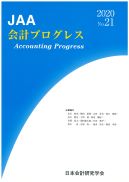Volume 2013, Issue 14
Displaying 1-7 of 7 articles from this issue
- |<
- <
- 1
- >
- >|
-
2013Volume 2013Issue 14 Pages 1-13
Published: 2013
Released on J-STAGE: September 01, 2021
Download PDF (695K) -
2013Volume 2013Issue 14 Pages 14-25
Published: 2013
Released on J-STAGE: September 01, 2021
Download PDF (687K) -
2013Volume 2013Issue 14 Pages 26-39
Published: 2013
Released on J-STAGE: September 01, 2021
Download PDF (699K) -
2013Volume 2013Issue 14 Pages 40-53
Published: 2013
Released on J-STAGE: September 01, 2021
Download PDF (765K) -
2013Volume 2013Issue 14 Pages 54-67
Published: 2013
Released on J-STAGE: September 01, 2021
Download PDF (726K) -
2013Volume 2013Issue 14 Pages 68-81
Published: 2013
Released on J-STAGE: September 01, 2021
Download PDF (868K) -
2013Volume 2013Issue 14 Pages 82-95
Published: 2013
Released on J-STAGE: September 01, 2021
Download PDF (779K)
- |<
- <
- 1
- >
- >|
